SNAS670 July 2015 TDC1011-Q1
PRODUCTION DATA.
- 1 Features
- 2 Applications
- 3 Description
- 4 Revision History
- 5 Pin Configuration and Functions
- 6 Specifications
- 7 Parameter Measurement Information
-
8 Detailed Description
- 8.1 Overview
- 8.2 Functional Block Diagram
- 8.3 Feature Description
- 8.4 Device Function Description
- 8.5 Programming
- 8.6
Register Maps
- 8.6.1
TDC1011 Registers
- 8.6.1.1 CONFIG_0 Register (address = 0h) [reset = 45h]
- 8.6.1.2 CONFIG_1 Register (address = 1h) [reset = 40h]
- 8.6.1.3 CONFIG_2 Register (address = 2h) [reset = 0h]
- 8.6.1.4 CONFIG_3 Register (address 3h) [reset = 3h]
- 8.6.1.5 CONFIG_4 Register (address = 4h) [reset = 1Fh]
- 8.6.1.6 TOF_1 Register (address = 5h) [reset = 0h]
- 8.6.1.7 TOF_0 Register (address = 6h) [reset = 0h]
- 8.6.1.8 ERROR_FLAGS Register (address = 7h) [reset = 0h]
- 8.6.1.9 TIMEOUT Register (address = 8h) [reset = 19h]
- 8.6.1.10 CLOCK_RATE Register (address = 9h) [reset = 0h]
- 8.6.1
TDC1011 Registers
- 9 Application and Implementation
- 10Power Supply Recommendations
- 11Layout
- 12Device and Documentation Support
- 13Mechanical, Packaging, and Orderable Information
Package Options
Mechanical Data (Package|Pins)
- PW|28
Thermal pad, mechanical data (Package|Pins)
Orderable Information
9 Application and Implementation
NOTE
Information in the following applications sections is not part of the TI component specification, and TI does not warrant its accuracy or completeness. TI’s customers are responsible for determining suitability of components for their purposes. Customers should validate and test their design implementation to confirm system functionality.
9.1 Application Information
The TDC1011 is an analog front-end for ultrasonic sensing applications. The device is typically used for the driving and sensing of ultrasonic transducers to perform accurate time-of-flight measurements. Ultrasonic time-of-flight sensing allows for fluid level, fluid identification or concentration measurements.
9.2 Typical Applications
9.2.1 Level and Fluid Identification Measurements
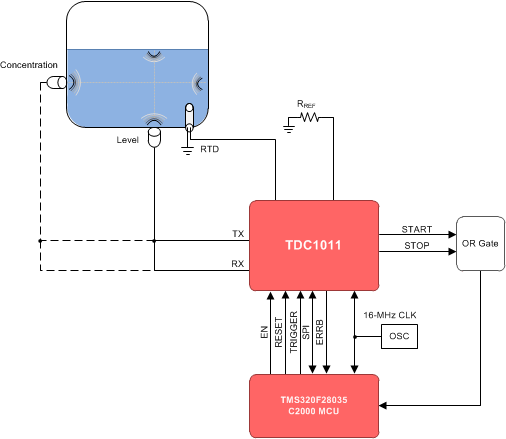 Figure 51. Level or Concentration Measurement Application Diagram
Figure 51. Level or Concentration Measurement Application Diagram
9.2.1.1 Design Requirements
Table 14. Design Parameters
| DESIGN PARAMETER | EXAMPLE VALUE |
|---|---|
| Fluid Level | |
| Range | 2 – 10 cm |
| Fluid Identification | |
| Accuracy | 0.5% concentration variation |
| Distance | 5.08 cm |
9.2.1.2 Detailed Design Procedure
9.2.1.2.1 Level Measurements
For level sensing applications, the total time-of-flight (TOF) of the sound wave in the fluid is measured. The pulses transmitted by a bottom mounted transducer travel through the fluid, to the surface of the fluid. The discontinuity between the fluid and air generates a reflected wave which returns back to the bottom mounted transducer.
At the beginning of a measurement cycle, the transducer is connected to a transmit channel of the AFE, and the transmit burst excites the transducer to generate an ultrasound wave. Synchronous to the TX burst, a START pulse is generated by the TDC1011 to indicate the start of a measurement. After the transmission is completed, and depending on the device configuration, the transducer is connected to a receive channel of the AFE.
When a valid echo is received, the TDC1011 generates a STOP pulse. Generation of multiple STOP pulses is possible through register configuration of the device. The START and STOP signal times are compared to determine the TOF.
The level of the fluid can be determined using the following equation:

where
- d is the fluid level in meters (m)
- TOF is the time-of-flight in seconds (s)
- c is the speed of sound in the fluid in meters per second (m/s)
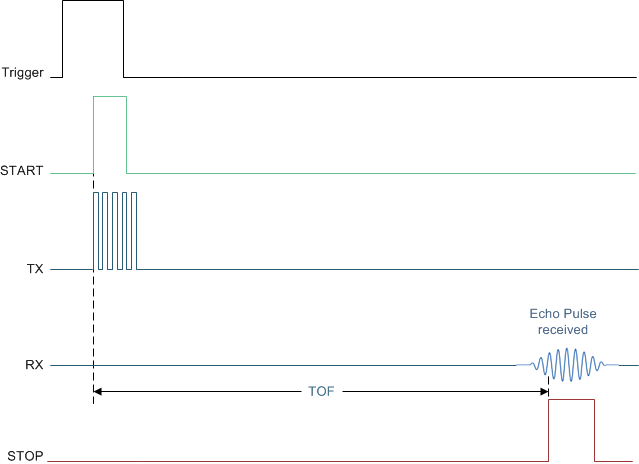 Figure 52. Relation Between Transmit and Receive Pulses in Level Measurements
Figure 52. Relation Between Transmit and Receive Pulses in Level Measurements
Level measurements have 2 main criteria: resolution and range (maximum height). Resolution accuracies of 1-2 mm are achievable but are impractical due to any environmental disturbances, such as tank vibrations, creating millimeter level surface waves. Ranges of up to 1 m are measurable utilizing VDD level excitation pulses, but surface disturbances and signal loss over longer distances make the reliable echo reception an issue. Greater level measurement reception can be achieved by mechanical means (level guide tube) and/or electronic means (level shifting the TX pulses to greater voltages; see TIDA-00322).
9.2.1.2.2 Fluid Identification
The TDC1011 can be used to measure the time-of-flight for a known distance to calculate the speed of sound (cmedium) in the fluid. This application utilizes the same circuitry as the level example but a transducer in a side mounted configuration transmitting across the container or to a target at a known distance from the transducer.
The temperature can also be measured to compensate for the temperature variation of sound. With the known distance, TOF and temperature, the speed of sound in the fluid can be determined and the identity of the medium verified.
After measuring the time-of-flight for the fixed distance, the speed of sound can be calculated as follows:

where
- cmedium is the speed of sound in the fluid in meters per second (m/s)
- d is the level in meters (m)
- TOF is the time of flight in seconds (s)
The measurement process is identical to the level example above. The speed of sound can be used to uniquely identify a variety of fluids. In this example, the concentration of diesel exhaust fluid (DEF) is measured with a desired accuracy resolution of 0.5% of concentration variation. For most fluids, the speed of sound varies over temperature, so every application will be different. In this example, all samples were all at ambient temperature of 23°C.
9.2.1.3 Application Curves
The data used in the following level and fluid identification graphs was collected using an ultrasonic test cell. The test cell is an acrylic plastic container with width of 2.54 cm and ultrasonic transducers attached to the outside using cyanoacrylate glue. The transducers in this experiment were STEMiNC 1MHz piezo electric ceramic discs (SMD10T2R111). Equivalent transducers with the following characteristics could be used:
- Piezo material: SM111
- Dimensions: 10mm diameter x 2mm thickness
- Resonant frequency: 1050 kHz (thickness mode)
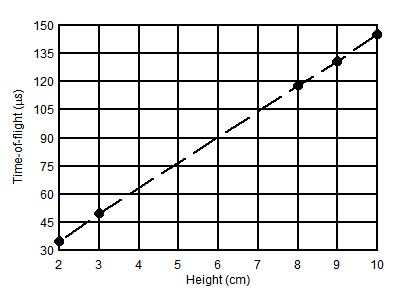
| Fluid Height in Tank | Time-of-Flight (µs) |
| Full (10 cm) | 145 |
| Full – 1 (9 cm) | 131 |
| Full – 2 (8 cm) | 118 |
| 3 cm | 50 |
| 2 cm | 35 |
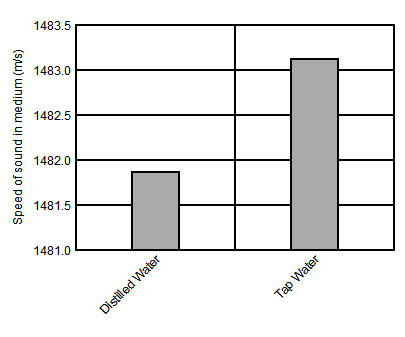
| Fluid | Speed of sound (m/s) |
|---|---|
| Distilled water | 1481.87 |
| Tap water | 1483.13 |
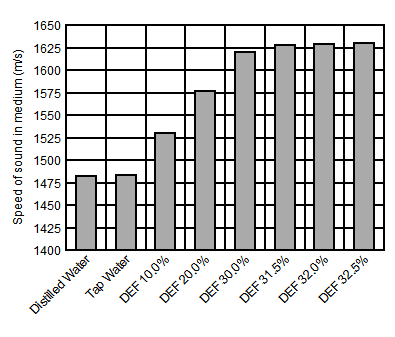
| Fluid | Speed of sound (m/s) |
|---|---|
| Distilled water | 1481.87 |
| Tap water | 1483.13 |
| DEF 10.0% | 1530.49 |
| DEF 20.0% | 1576.42 |
| DEF 30.0% | 1620.00 |
| DEF 31.5% | 1627.37 |
| DEF 32.0% | 1629.15 |
| DEF 32.5% | 1630.00 |
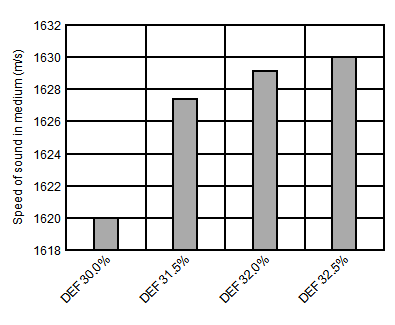
| Fluid | Speed of sound (m/s) |
|---|---|
| DEF 30.0% | 1620.00 |
| DEF 31.5% | 1627.37 |
| DEF 32.0% | 1629.15 |
| DEF 32.5% | 1630.00 |